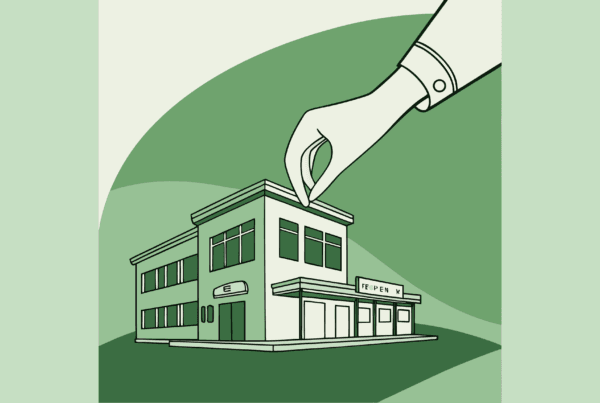Selling a dermatology practice is one of the most significant financial decisions of your career. In New Orleans, shifting market dynamics have created a unique window of opportunity for practice owners. This guide provides a straightforward look at the current landscape, what drives your practice’s value, and how to prepare for a successful transition. The process is more than a transaction. It’s about securing your legacy and financial future.
Curious about what your practice might be worth in today’s market?
New Orleans Market Overview
The market for dermatology practices in New Orleans is strong. Dermatology remains one of the most sought-after specialties for investors, thanks to its mix of necessity-based medical services and high-margin cosmetic procedures. The city’s unique culture and Gulf Coast location contribute to a steady demand for dermatological care.
A Seller’s Market
High demand from buyers creates a competitive environment. This can lead to premium valuations for well-run practices. Buyers are actively looking for established practices with a solid patient base and opportunities for growth in the New Orleans area. The strategic importance of the region makes it a key target for groups looking to expand their footprint.
Who is Buying?
The buyers are often not other solo physicians anymore. They are typically private equity-backed dermatology groups or regional health systems. These groups have the capital to invest in technology, marketing, and expansion. They are looking for good practices to partner with, not just buy out. They see your practice as a strategic piece of a larger puzzle.
Key Considerations for a Successful Sale
An active market is great, but a successful sale depends on the health of your individual practice. Buyers look past the surface-level numbers. They focus on a few key areas that determine the real value and risk of an acquisition. We often see owners who could achieve significantly higher valuations by addressing these points a year or two before they plan to sell. Before you even think about a price, consider how a buyer will view your practice’s physician dependence, your service mix between medical and cosmetic, and your overall operational readiness, including clean financial records and efficient workflows. A practice that runs smoothly without being 100% reliant on the owner is always more valuable.
What Market Activity Looks Like
Selling your practice doesn’t always mean handing over the keys and walking away. Today’s market offers more flexibility than ever before, especially for owners who may want to stay involved clinically. You have more options than you might think.
Three common transaction types we see in the New Orleans area are:
- The Private Equity Partnership. In this model, a PE-backed group acquires a majority stake in your practice. You receive a significant cash payment upfront but “roll over” some of your equity into the new, larger company. This gives you a “second bite at the apple” when the larger group sells in the future.
- The Strategic Acquisition. This is often done by a larger, existing dermatology group or a hospital system looking to expand its service area. The goal is to integrate your practice into their existing operations. These deals can offer strong job security for your staff.
- The Full Buyout. This is the traditional model where you sell 100% of the practice and transition out over an agreed-upon period. This is a common path for physicians who are ready to retire completely.
The Sale Process at a Glance
The path from decision to closing follows a structured process. It starts long before a buyer is ever contacted. The Preparation phase is where you get your financial, operational, and legal documents in order. This is followed by a formal valuation to set a realistic asking price. Then, instead of just listing the practice, a confidential Marketing process is run to generate interest from a curated list of qualified buyers. Once you select a preferred buyer, you enter Due Diligence, where the buyer verifies every detail of your practice. This is where most deals face challenges if preparation was poor. The final stage is Closing, where legal documents are signed and the transition plan is initiated.
Understanding Your Practice’s Value
Valuation is more art than science. It’s not just a formula. Buyers are purchasing your future cash flows. The most common valuation method is based on a multiple of your Adjusted EBITDA. Adjusted EBITDA is a measure of your practice’s true profitability after adding back personal expenses or a higher-than-market owner salary. The multiple is determined by factors like your practice’s size, growth rate, provider team, and service mix.
Here’s a simplified look at how the numbers work:
| Component | What It Means | Example |
|---|---|---|
| Adjusted EBITDA | Your practice’s true cash flow, removing owner-specific perks. | $700,000 |
| Valuation Multiple | A multiplier based on risk, growth, and market demand for derm. | 6.5x |
| Enterprise Value | The total estimated market value of your practice. | $4,550,000 |
This is a basic model. Getting the EBITDA number right and arguing for the highest possible multiple is where professional guidance makes a difference.
A comprehensive valuation is the foundation of a successful practice transition strategy.
Life After the Sale
The work isn’t over once the deal is signed. A successful transition is defined by what happens next. Planning for your post-sale life is just as important as negotiating the sale price. It ensures the legacy you built continues and your personal goals are met.
Your New Role
Do you want to continue practicing medicine without the administrative headaches? Or are you ready to retire? Your employment agreement is a critical negotiation point. It defines your compensation, responsibilities, and schedule after the sale.
Protecting Your Team
Your staff is a huge part of your practice’s success and legacy. Negotiating for their continued employment, fair compensation, and benefits is a key part of the process. The right buyer will see your team as a valuable asset and will want to keep them.
Maximizing Your Take-Home Pay
The headline price is not what you deposit in the bank. The structure of your sale has major implications for your after-tax proceeds. Proper tax planning from the beginning can significantly impact your net financial outcome.
Every practice sale has unique considerations that require personalized guidance.
Frequently Asked Questions
What factors contribute to the current strong market for dermatology practices in New Orleans?
The strong market is driven by the high demand for both necessity-based medical services and high-margin cosmetic procedures. New Orleans’ unique culture and Gulf Coast location also contribute to a steady demand for dermatological care.
Who are the typical buyers of dermatology practices in New Orleans?
Buyers are often private equity-backed dermatology groups or regional health systems rather than solo physicians. These groups have capital for technology, marketing, and expansion and view your practice as a strategic part of a larger network.
What are the key areas buyers focus on when valuing a dermatology practice?
Buyers focus on physician dependence, the service mix between medical and cosmetic services, operational readiness, clean financial records, and efficient workflows. A practice that runs smoothly without being fully reliant on the owner is more valuable.
What are the common transaction types for selling a dermatology practice in New Orleans?
The common transactions include: 1) Private Equity Partnership, where you sell a majority stake but retain some equity; 2) Strategic Acquisition by a larger group or hospital system integrating your practice; 3) Full Buyout, where you sell 100% of the practice and transition out, often for retirement.
Why is post-sale planning important after selling a dermatology practice?
Post-sale planning ensures your legacy continues and your personal goals are met. It involves negotiating your post-sale role, protecting your team’s employment and benefits, and structuring the sale for optimal after-tax proceeds.



